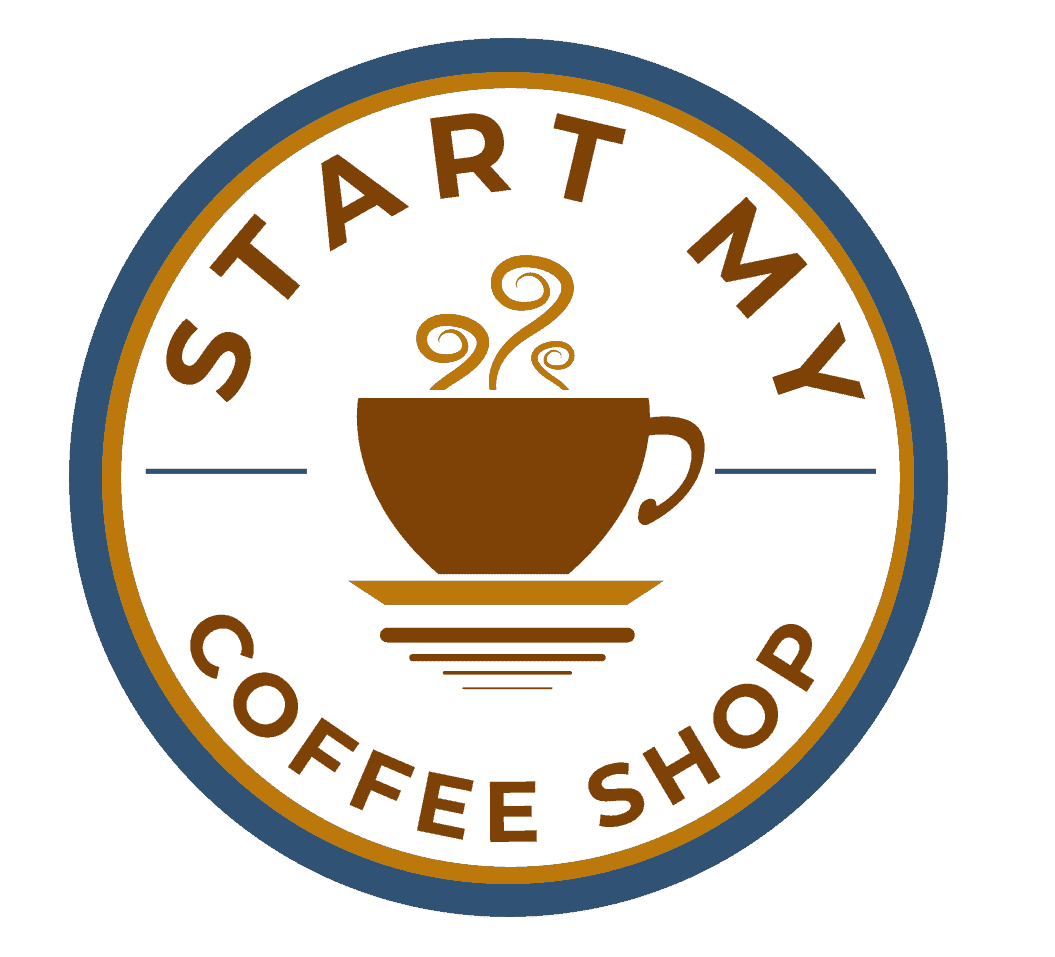Coffee shops have become more than just places to grab a quick cup of joe. They have evolved into social hubs, community gathering spots, and creative sanctuaries. With the ever-increasing demand for high-quality coffee and the rise of the café culture, opening a coffee shop presents a compelling entrepreneurial opportunity.
A business plan proposal for a coffee shop covers market analysis, unique selling proposition, menu, location, marketing, operations, and financial projections. Brew with a strong comprehensive plan to win the hearts of the coffee industry!
In this article, I will outline the key components necessary for launching and running a great coffee shop.
1. Executive Summary
 The executive summary is a crucial section within your business plan as it encapsulates the essence of your coffee shop venture. It provides a concise yet comprehensive overview of your business plan, highlighting key elements that investors and partners seek. In this section, you will outline the concept of your coffee shop, emphasizing its unique selling points and the experience you aim to deliver to customers.
The executive summary is a crucial section within your business plan as it encapsulates the essence of your coffee shop venture. It provides a concise yet comprehensive overview of your business plan, highlighting key elements that investors and partners seek. In this section, you will outline the concept of your coffee shop, emphasizing its unique selling points and the experience you aim to deliver to customers.
Additionally, the executive summary delves into your target market, identifying the specific demographics, preferences, and needs of your potential customers. It highlights the competitive advantage your coffee shop possesses, whether it’s through superior quality, innovative offerings, exceptional customer service, or a combination of factors that sets you apart from existing market players.
Furthermore, the executive summary includes a glimpse into your financial projections, showcasing the potential profitability and return on investment for interested parties. By providing a snapshot of the anticipated revenue, expenses, and profitability, you can attract potential investors and partners who are keen to support your coffee shop venture.
In essence, the executive summary acts as a captivating hook, designed to pique the interest of potential investors and partners by succinctly communicating the most compelling aspects of your coffee shop business plan. It serves as a persuasive tool, enticing stakeholders to delve further into the details of your comprehensive proposal.
Read more about: Business Plan for Small Coffee and Juice Shop: Juice Up Your Business
2. Market Analysis
In order to achieve greatness in the coffee industry, a deep understanding of the market and target audience is essential. Conducting a comprehensive market analysis becomes the foundation for making informed business decisions. By analyzing the industry, you can identify emerging trends that shape consumer preferences and demands. This knowledge enables you to tailor your offerings and stay ahead of the competition.
Examining local demographics is another critical aspect of market analysis. Understanding the age groups, income levels, and lifestyle preferences of the target market allows you to align your coffee shop’s offerings with their specific needs and desires. For example, if the area has a younger population with a preference for specialty coffee, you can focus on providing unique and artisanal coffee options.
Furthermore, evaluating the competitive landscape helps identify gaps and opportunities for your coffee shop. By studying existing competitors, you can learn from their strengths and weaknesses and position your business strategically. This analysis enables you to offer something different or better than your competitors, whether it’s through superior quality, innovative products, or exceptional customer service.
3. Unique Selling Proposition (USP)
In a highly saturated market, setting your coffee shop apart from the competition is crucial. To achieve this, it is vital to define and emphasize your coffee shop’s unique selling proposition (USP). Your USP is what distinguishes your business and makes it stand out in the minds of customers.
Consider various factors that can contribute to your USP. It could be a specific coffee brewing method that creates a distinct flavor profile, a signature blend crafted from premium beans sourced directly from growers, or a strong commitment to sustainability and ethical sourcing practices. Whatever aspect you choose, it should be something that resonates with your target audience and aligns with their values and preferences.
Once you have defined your USP, the next step is to clearly communicate it to your target customers. Incorporate your USP into your branding, marketing materials, and messaging. Highlight it in your menu descriptions, signage, and social media presence. By effectively communicating your USP, you create awareness and attract customers who are specifically looking for what your coffee shop offers.
Your USP becomes the foundation of your coffee shop’s identity and serves as a compelling reason for customers to choose your establishment over competitors.
4. Menu and Product Offering
 To create an enticing coffee shop experience, it is important to craft a diverse menu that caters to a wide range of tastes and preferences. In addition to the classic espresso-based drinks like cappuccinos and lattes, consider incorporating alternative brewing methods such as pour-over, French press, or cold brew. This variety allows customers to explore different flavors and brewing techniques, adding depth to their coffee experience.
To create an enticing coffee shop experience, it is important to craft a diverse menu that caters to a wide range of tastes and preferences. In addition to the classic espresso-based drinks like cappuccinos and lattes, consider incorporating alternative brewing methods such as pour-over, French press, or cold brew. This variety allows customers to explore different flavors and brewing techniques, adding depth to their coffee experience.
Expanding beyond beverages, it is beneficial to develop a selection of artisanal pastries, light meals, and healthy snack options. Freshly baked croissants, muffins, and scones can complement the coffee offerings and entice customers with their delicious aroma. Additionally, offering options like salads, sandwiches, and wraps caters to those seeking a light and satisfying meal.
To appeal to conscious consumers, emphasize the quality and sourcing of your ingredients. Highlight any organic or locally sourced components used in your menu items. Transparently communicate your commitment to sustainable and ethical practices, such as fair trade coffee beans or environmentally friendly packaging.
You create a coffee shop that appeals to a broad range of customers by curating a diverse menu that incorporates various brewing methods, artisanal pastries, light meals, and conscious ingredient sourcing. This attention to variety and quality enhances the overall coffee experience and fosters customer satisfaction and loyalty.
Read more about: Business Plan for Selling Coffee: Wake Up and Smell Business
5. Location and Facilities
Seek out areas with bustling foot traffic, such as busy shopping districts or near offices and educational institutions, to maximize visibility and attract potential customers. Additionally, a vibrant community atmosphere can contribute to a steady flow of patrons.
When evaluating potential locations, carefully consider the size of the space. It should be spacious enough to accommodate both seating areas for customers and a well-organized production area for coffee preparation. This ensures efficient workflow and a comfortable environment for both staff and customers.
Creating an inviting ambiance is equally important. Opt for comfortable seating arrangements that encourage customers to relax and enjoy their coffee. Incorporate aesthetic decor that aligns with your brand image, creating a visually appealing and memorable atmosphere. Maximizing natural light not only enhances the overall ambiance but also contributes to a pleasant and welcoming environment.
A strategically chosen location with high foot traffic, proximity to key establishments, and a warm and inviting ambiance sets the stage for attracting customers and fostering a loyal customer base.
6. Marketing and Promotion
To ensure the longevity of your coffee shop, it is essential to develop a robust marketing strategy that effectively raises awareness and attracts customers. A combination of online and offline marketing channels can be leveraged to reach a broader audience.
Online platforms, such as social media, play a crucial role in modern marketing. Utilize platforms like Facebook, Instagram, and Twitter to showcase your coffee offerings, share engaging content, and interact with customers. Consider running targeted ad campaigns to reach specific demographics in your area. Additionally, collaborating with local influencers or establishing partnerships with complementary businesses can expand your online reach and tap into new customer segments.
Offline marketing efforts can be equally effective. Participating in community events or sponsoring local initiatives helps to build brand recognition and foster connections within the community. Distribute flyers, place ads in local publications, and engage in word-of-mouth marketing to reach potential customers in your vicinity.
Engaging with customers is key to building loyalty. Implement loyalty programs that reward repeat visits and offer personalized discounts. Regularly introduce specials, seasonal promotions, or limited-time offers to keep customers engaged and entice them to try new offerings.
7. Operations and Management
When outlining the operational aspects of your coffee shop, it is crucial to address staffing, training, and day-to-day processes. Clearly define roles and responsibilities for each team member, placing strong emphasis on providing exceptional customer service and product knowledge. Implement efficient inventory management systems to ensure a smooth supply chain and establish reliable relationships with suppliers.
Prioritize staff development and continuous improvement through regular training and feedback sessions to maintain a consistently high standard of service. By effectively managing these operational aspects, your coffee shop can create a positive work environment, deliver exceptional customer experiences, and establish a strong foundation for long-term growth.
Read more about: Business Plan for Selling Coffee Online: From Farm to Digital Cup
8. Financial Projections
To ensure the financial stability of your coffee shop, it is crucial to create a detailed financial plan. Consider all startup costs, including equipment, renovations, permits, licenses, marketing expenses, and working capital.
Project your revenue based on estimated daily sales, factoring in pricing, average customer spend, and the number of transactions. It’s essential to conduct a break-even analysis to determine the point at which your sales cover all expenses.
Additionally, outline your profitability targets and set financial goals to drive growth and sustainability. By meticulously planning your finances and regularly monitoring your performance, you can make informed decisions, optimize your operations, and achieve long-term profitability for your coffee shop.
9. Risk Assessment
By anticipating these risks, you can develop contingency plans and strategies to mitigate their impact.
One potential risk is changes in consumer behavior. Stay updated on trends and preferences within the coffee industry to ensure your offerings align with evolving customer demands. Additionally, intense competition is a constant challenge. Differentiate your coffee shop through unique offerings, exceptional customer service, or targeted marketing campaigns to stand out from the competition.
Unforeseen events can also pose risks, such as pandemics or economic downturns. In response to such challenges, develop contingency plans that allow your coffee shop to adapt and thrive. This could involve diversifying revenue streams, such as offering online ordering or delivery services, or implementing cost-cutting measures during lean times.
Regularly reassess and update your risk management strategies to stay prepared for any potential challenges that may arise. By being proactive and agile in your approach, you can effectively navigate risks and position your coffee shop for long-term achievement even in the face of uncertainties.
Summary
Opening a coffee shop requires careful planning, attention to detail, and a passion for providing an exceptional coffee experience. By crafting a comprehensive business plan that addresses market analysis, differentiation, operations, and financial projections, you will be well-positioned to navigate the competitive landscape and brew popularity in the coffee industry.
Frequently Asked Questions
Q: How much does it cost to open a coffee shop?
A: The cost of opening a coffee shop can vary depending on factors such as location, size, equipment, and renovations. On average, it can range from $80,000 to $300,000.
Q: Do I need prior experience in the coffee industry to start a coffee shop?
A: While prior experience can be beneficial, it is not a requirement. With proper research, training, and a passion for coffee, you can learn the necessary skills and knowledge to run a great coffee shop.
Q: What permits and licenses are needed to open a coffee shop?
A: Generally, you will need business licenses, health permits, food handling permits, and possibly liquor licenses if you plan to serve alcohol. It’s important to research and comply with local regulations.
To learn more on how to start your own coffee shop, check out my startup documents here.
Disclaimer: The information provided by StartMyCoffeeShop.com (“The Site”) is for general informational purposes only. All information on the Site is provided in good faith. However, we make no representation or warranty of any kind, express or implied, regarding the accuracy, adequacy, validity, reliability, availability, or completeness of any information on the Site. Under no circumstance shall we have any liability to you for any loss or damage of any kind incurred as a result of the use of the Site or Reliance on any information provided on the Site. Your use of the Site and reliance on any information on the Site is solely at your own risk. This blog post is for educational purposes only and does not constitute legal advice. Please consult a legal expert to address your specific needs. Terms and Conditions. (https://startmycoffeeshop.com/terms-and-conditions/)

Hi! I’m Shawn Chun
My adventure in coffee began when I first launched my first coffee shop back in the early 2000s. I had to figure out so many things on my own and to make it worse within 2 years of opening two large corporate coffee chains moved in just blocks away from me!
As I saw smaller and even some larger coffee shops in the neighborhood slowly lose customers to these giant coffee chains and slowly close up shop, I knew that I had to start getting creative…or go out of business.
I (like you may be) knew the coffee industry well. I could make the best latte art around and the foam on my caps was the fluffiest you have ever seen. I even had the best state-of-the-art 2 group digital Nuova Simonelli machine money could buy. But I knew that these things alone would not be enough to lure customers away from the name brand established coffee shops.
Eventually, through lots of trial and error as well as perseverance and creativity I did find a way to not only survive but also thrive in the coffee/espresso industry even while those corporate coffee chains stayed put. During those years I learned to adapt and always faced new challenges. It was not always easy, however, in the end, I was the sole survivor independent coffee shop within a 10-mile radius of my location. Just two corporate coffee chains and I were left after that year. All told the corporate coffee chains took down over 15 small independent coffee shops and kiosks and I was the last one standing and thriving.
Along the years I meet others with the same passion for coffee and I quickly learned that it is not only “how good a barista is” that makes a coffee shop successful, but the business side of coffee as well.
Hence why I started this website you are on now. To provide the tools and resources for up and coming coffee shop owners to gain that vital insight and knowledge on how to start a coffee shop successfully.
Stick around, browse through my helpful blog and resources and enjoy your stay! With lots of LATTE LOVE!
Shawn






